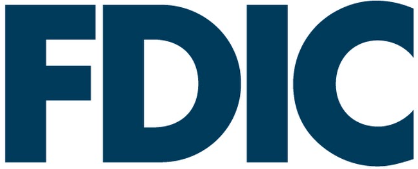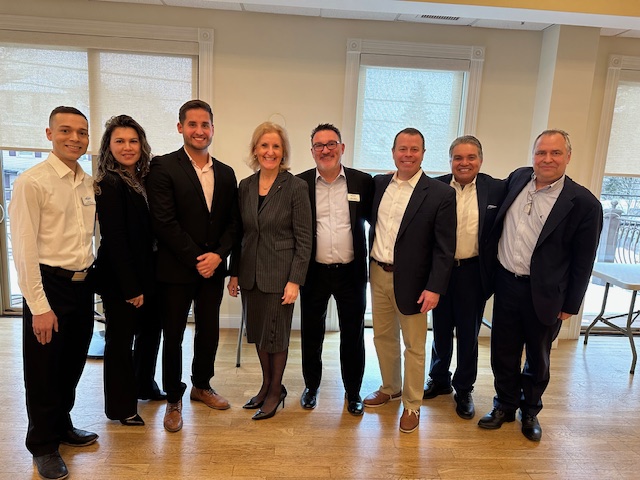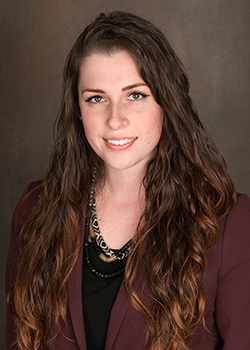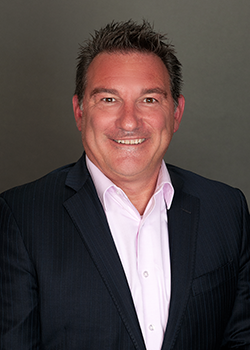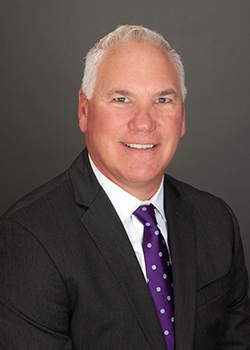The Internal Revenue Service today announced its annual Dirty Dozen list of tax scams for 2025 with a warning for taxpayers, businesses and tax professionals to watch out for common schemes that threaten their tax and financial information.
Ranging from email schemes to misleading tax credits, many of the Dirty Dozen items peak during filing season as people prepare their tax returns. In reality, these scams can occur throughout the year as fraudsters look for ways to steal money, personal information and data.
The IRS’ annual Dirty Dozen campaign lists 12 scams and schemes that threaten taxpayers. While the Dirty Dozen is not a legal document or a formal listing of agency enforcement priorities, the education effort is designed to raise awareness and protect taxpayers and tax pros from common tax scams and schemes.
“Scammers are relentless, and they use the guise of tax season to try tricking taxpayers into falling into a variety of traps. These red flags can lead to everything from identity theft to being misled into claiming tax credits for which they’re not entitled,” said Terry Lemons, IRS communications senior adviser. “For more than two decades, the IRS has highlighted the Dirty Dozen through far-reaching communications and education campaigns as part of a wider effort by the agency to protect taxpayers from being scammed.”
Under Lemons’ leadership, the IRS created the Dirty Dozen campaign in 2002 to counter emerging scams being seen across the country. Combined with related efforts by the Security Summit, the IRS has worked for a decade with state tax agencies and the nation’s tax software and financial industry as well as tax professionals to educate taxpayers about scams and fraudulent schemes.
The Dirty Dozen list often has cautioned taxpayers about tax-related identity theft, in support of the Security Summit’s ongoing efforts in this area, that have led to protecting millions of taxpayers and billions of dollars from refund fraud.
Last year, the tax community launched a related effort called the Coalition Against Scam and Scheme Threats (CASST) following a surge in social media-fueled scams.
As part of these continuing efforts to protect taxpayers against constantly evolving scams, the 2025 IRS Dirty Dozen list highlights the following 12 pervasive threats:
Email phishing scams: The IRS continues to see a barrage of email and text scams targeting taxpayers and others. Taxpayers and tax professionals should be alert to fake communications from entities posing as legitimate organizations in the tax and financial community, including the IRS, state tax agencies and tax software companies. These messages arrive in the form of unsolicited texts or emails to lure unsuspecting victims into providing valuable personal and financial information that can lead to identity theft. There are two main types:
- Phishing: An email sent by fraudsters claiming to come from the IRS. The email lures the victims into the scam with a variety of ruses such as enticing victims with a phony tax refund or threatening them with false legal or criminal charges for tax fraud.
- Smishing: A text or smartphone SMS message where scammers often use alarming language such as, “Your account has now been put on hold,” or “Unusual Activity Report,” with a bogus “Solutions” link to restore the recipient’s account. The promise of unexpected tax refunds is another potential tactic used by scam artists.
As a reminder, never click on any unsolicited communication claiming to be from the IRS as it may surreptitiously load malware. This may also be a way for malicious hackers to load ransomware that keeps the legitimate user from accessing their system and files.
The IRS has special information available to help people understand and report email scams.
Bad social media advice: Another growing concern in 2025 continues to involve incorrect tax information on social media that can mislead honest taxpayers with bad advice, potentially leading to identity theft and tax problems. Social media platforms routinely circulate inaccurate or misleading tax information, including on TikTok where people share wildly inaccurate tax advice. Some involve urging people to misuse common tax documents like Form W-2.
The IRS and CASST warn people not to fall for these scams, and urge them to follow trusted social media advice from the IRS, tax professionals and other reputable sources. The IRS reminds taxpayers who knowingly file fraudulent tax returns that they could potentially face significant civil and criminal penalties.
IRS Individual Online Account help from scammers: Swindlers can pose as a “helpful” third party and offer to help create a taxpayer’s IRS Individual Online Account at IRS.gov. In reality, no help is needed, and the agency offers tips on how to sign up and avoid scams. The IRS Individual Online Account provides taxpayers with valuable personal tax information. But watch out: Third parties making these offers will try to steal a taxpayer’s personal information and try to submit fraudulent tax returns in the victim’s name to get a big refund.
Fake charities: Bogus charities are a perennial problem that can intensify whenever a crisis or natural disaster strikes. Scammers set up these fake organizations to take advantage of the public’s generosity. They seek money and personal information, which can be used to further exploit victims through identity theft.
Taxpayers who give money or goods to a charity might be able to claim a deduction on their federal tax return if they itemize deductions, but charitable donations only count if they go to a qualified tax-exempt organization recognized by the IRS.
False Fuel Tax Credit claims: A major concern during the past year involved taxpayers who were misled into believing they were eligible for the Fuel Tax Credit. The credit is meant for off-highway business and farming use and is not available to most taxpayers. However, unscrupulous tax return preparers and promoters, including people on social media, continue enticing taxpayers into inflating their refunds by erroneously claiming the credit. The IRS has seen an increase in the promotion of filing certain refundable credits using Form 4136, Credit for Federal Tax Paid on Fuels. The IRS urges people to get more information and ensure they are properly claiming this credit.
Credits for Sick Leave and Family Leave: This specialized credit is available for self-employed individuals for 2020 and 2021 during the pandemic; the credit is not available for later tax years. The IRS is seeing repeated instances where taxpayers are using Form 7202, Credits for Sick Leave and Family Leave for Certain Self-Employed Individuals, to incorrectly claim a credit based on income earned as an employee and not as a self-employed individual.
Bogus self-employment tax credit: Social media advice continues to circulate about a non-existent “Self-Employment Tax Credit” that’s misleading taxpayers into filing false claims. Promoters market it as a way for self-employed people and gig workers to get big payments for the COVID-19 pandemic period. Similar to misleading marketing around the Employee Retention Credit, there is inaccurate information being circulated that suggests many people qualify for the tax credit and payments of up to $32,000 when they actually do not.
In reality, the underlying credit being referred to in social media is not called the “Self-Employment Tax Credit,” it’s a much more limited and technical credit called the Credits for Sick Leave and Family Leave. Many people simply do not qualify for these credits, and the IRS is closely reviewing claims coming in under this provision, so taxpayers filing claims do so at their own risk.
Improper household employment taxes: Taxpayers “invent” fictional household employees and then file Schedule H (Form 1040), Household Employment Taxes, to claim a refund based on false sick and family medical leave wages they never paid.
The overstated withholding scam: This is a recent scheme circulating on social media encouraging people to fill out Form W-2, Wage and Tax Statement, or other forms like Form 1099-NEC and other 1099s with false income and withholding information.
In this overstated withholding scheme, scam artists suggest people make up large income and withholding amounts as well as the fictional employer supplying those amounts. Scam artists then instruct people to file the bogus tax return electronically in hopes of getting a substantial refund due to the large amount of fraudulent withholding.
If the IRS cannot verify the wages, income or withholding credits entered on the tax return, the tax refund will be held pending further review. Taxpayers should always file a complete and accurate tax return. They should only use legitimate information returns, such as an employer issued Form W-2, to complete returns correctly.
There are multiple variations of the overstated withholding credit scheme, including those involving Forms W-2 and W-2G; Forms 1099-R, 1099-NEC, 1099-DIV, 1099-OID and 1099-B; as well as the Alaskan Dividend Fund, Schedule K-1 with Withholding Reported, and Unspecified Source of Withholding Credit Claimed.
Misleading Offers in Compromise: The Offers in Compromise (OIC) program is an important program that helps people settle their federal tax debts when they are unable to pay in full. But “mills” can aggressively promote Offers in Compromise in misleading ways to people who clearly don’t meet the qualifications, frequently costing taxpayers thousands of dollars. A taxpayer can check their eligibility for free using the IRS Offer in Compromise Pre-Qualifier tool.
Ghost tax return preparers: Most tax preparers provide outstanding and professional service. However, people should be careful of shady tax professionals and watch for common warning signs, including charging a fee based on the size of the refund. A major red flag or bad sign is when the tax preparer is unwilling to sign the return. Avoid these “ghost” preparers, who will prepare a tax return but refuse to sign or include their IRS Preparer Tax Identification Number (PTIN) as required by law. Taxpayers should never sign a blank or incomplete return. Instead, the IRS reminds taxpayers to turn to a trusted tax professional for help.
New client scams and spear phishing: In 2025, the IRS continues to see the “new client” scam, which involves spear phishing attempts that target tax pros. Cybercriminals impersonate new, potential clients to trick tax professionals and other businesses into responding to their emails. Once the tax pro responds, the scammer sends a malicious attachment or URL that can compromise the preparer’s computer systems and allow the attacker to access sensitive client information.
Phishing is a term given to emails or text messages designed to get users to provide personal information, and spear phishing is a phishing attempt tailored to a specific organization or business. Tax professionals frequently find themselves a target of this type of scam. Spear phishing holds greater potential for harm because a successful spear phishing attack can ultimately steal client data and the tax pro’s identity, allowing the thief to file fraudulent returns using the stolen information.
Businesses and individuals, including tax pros, should always be cautious and look out for any suspicious requests or unusual behavior before sharing any sensitive information or responding to an email. Warning signs include poorly constructed sentences and unusual word choices. Be aware that by gaining access to a hacked email account, scammers can locate a genuine email from a previous victim’s email account sent to their tax professional.
Baker’s Dozen: Watch out for other abusive schemes
The IRS also reminds taxpayers that beyond the Dirty Dozen, there are a wide array of other abusive schemes and bogus tax avoidance strategies that can mislead well-intentioned taxpayers. These can involve different types of trusts, offshore schemes and even individual retirement arrangements. More information on past schemes is available on the special Dirty Dozen section on IRS.gov.
While the Dirty Dozen list is not a legal document or a formal listing of agency enforcement priorities, it is intended to alert taxpayers and the tax professional community about various scams and schemes.
Report abusive tax schemes and tax return preparers
In support of the Dirty Dozen awareness effort, the IRS also encourages people to report individuals who promote improper and abusive tax schemes as well as tax return preparers who deliberately prepare improper returns.
To report an abusive tax scheme or a tax return preparer, people should use the online Form 14242 – Report Suspected Abusive Tax Promotions or Preparers, or mail or fax a completed Form 14242 and any supporting material to the IRS Lead Development Center in the Office of Promoter Investigations.
Mail:
Internal Revenue Service
Lead Development Center MS7900
1973 N. Rulon White Blvd
Ogden, UT 84404
Fax: 877-477-9135
Taxpayers and tax practitioners may also send the information to the IRS Whistleblower Office for a possible monetary award.
